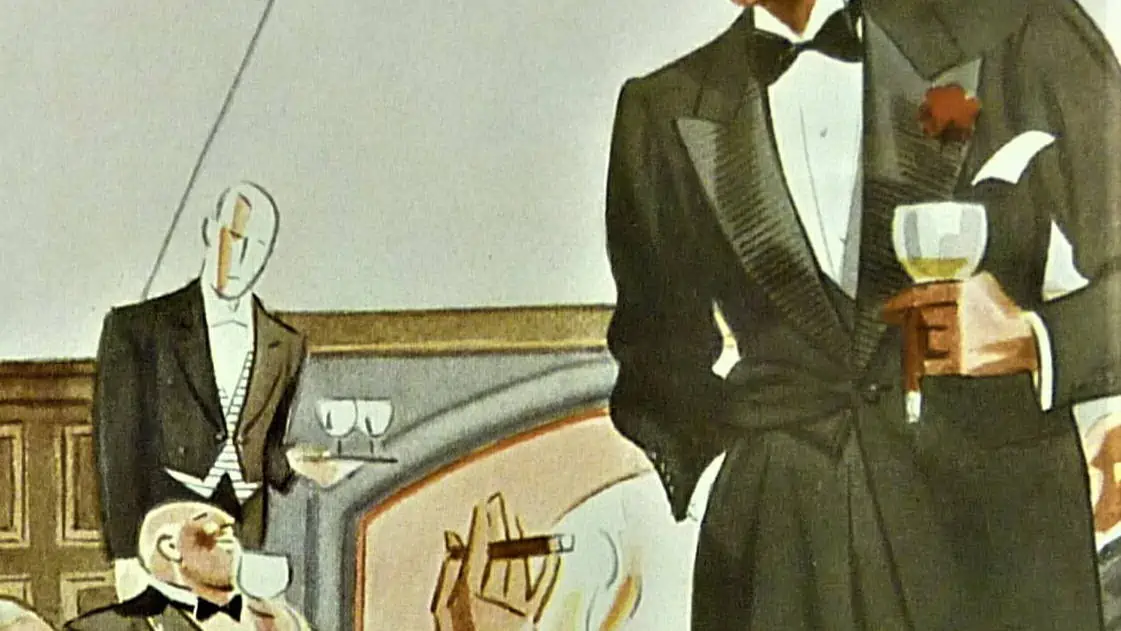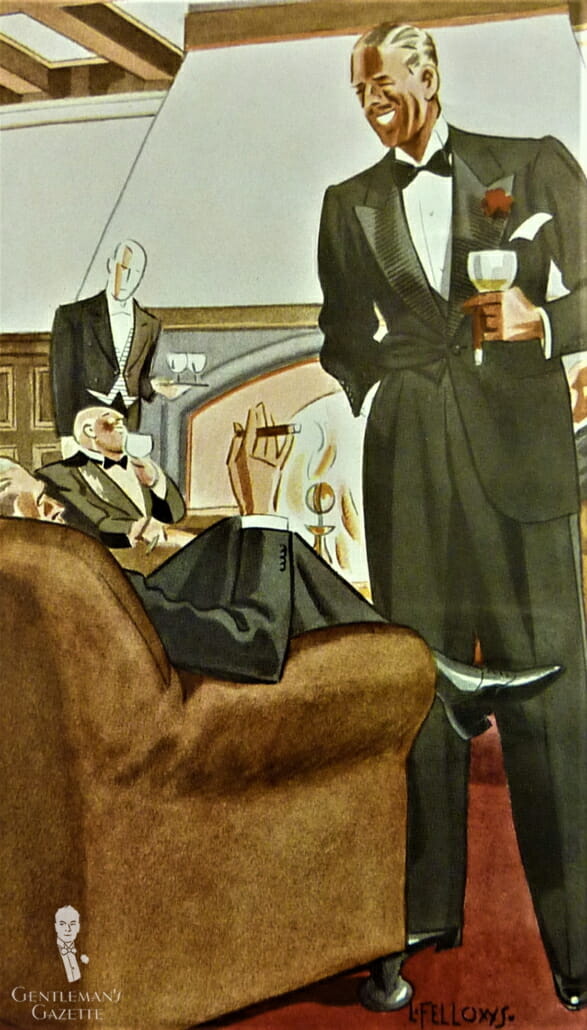
Having established what constitutes black tie and white tie attire, we now turn to the dress codes’ etiquette to determine when and where that attire should be worn and by whom.
- When: Evening Wear Etiquette
- Who Should Wear Black Tie? Adults!
- Where Can You Wear Black Tie? By Custom!
- Where: Public Entertainments – Opera, Theater, Gala
- Where: Coming-of-Age Ceremonies
- Where: Evening Wedding Ceremonies
- Where: Evenings at Sea
- Where: Diplomatic Functions – Traditionally White Tie
- Where: Formal Dinners
- Where: By Invitation
When: Evening Wear Etiquette
White tie and black tie are the two categories of a class of dress known as evening wear (or evening dress in the UK), a centuries-old tradition that reserved one’s finest attire until after sundown. The original purpose of such apparel was to leave behind the dirt and smell of a day spent on horseback or in the city–but after the advent of the automobile it became primarily aesthetic, representing what one etiquette guide described as “nothing more among people of social standing or inclination than the desire to be clean, neat, and as attractive as possible when they meet for social purposes.” Prior to the Second World War, the dinner jacket and tailcoat were considered the only attire appropriate for such evening socializing. Following the war, the business suit (then known as a sack or lounge suit) became acceptable at informal occasions both night and day, which meant that evening wear was redefined as attire appropriate only for evenings and became increasingly limited to only the most formal of affairs.
Black & White Tie Only Come Out at Night
Regardless of how evening wear is defined, the ideal for the dinner jacket and tailcoat is that they should not appear in broad daylight. Because this can be quite unavoidable during summer – particularly in regions located far from the equator – etiquette experts have had to devise more practical guidelines. The most common solution is to define evening chronologically and discourage the wearing of corresponding attire in public prior to six o’clock. The other school of thought allows more latitude for earth’s latitudes and asserts that evening begins at 6 p.m. or dark, whichever comes first. In either case, unless he is working as a waiter, the only excuse for a man to be seen in a tuxedo during the day is if he is traveling to an evening event or attending certain European state functions.
The protocol of reserving the dinner jacket and tailcoat for wear after six is self-evident in Britain which has maintained the elegant custom of morning dress, a category of clothing designated specifically for formal daytime events. On the other side of the Atlantic, however, formal day clothes have all but disappeared since World War II and in their absence, most North Americans have come to view the tuxedo and tailcoat erroneously as all-purpose “formalwear” and commonly sport it at afternoon weddings. Consequently, the proper use of evening wear has become a habit generally confined to the privileged minority that attends black-tie events often enough to view the tuxedo as an integral part of a man’s wardrobe rather than as a rented novelty.
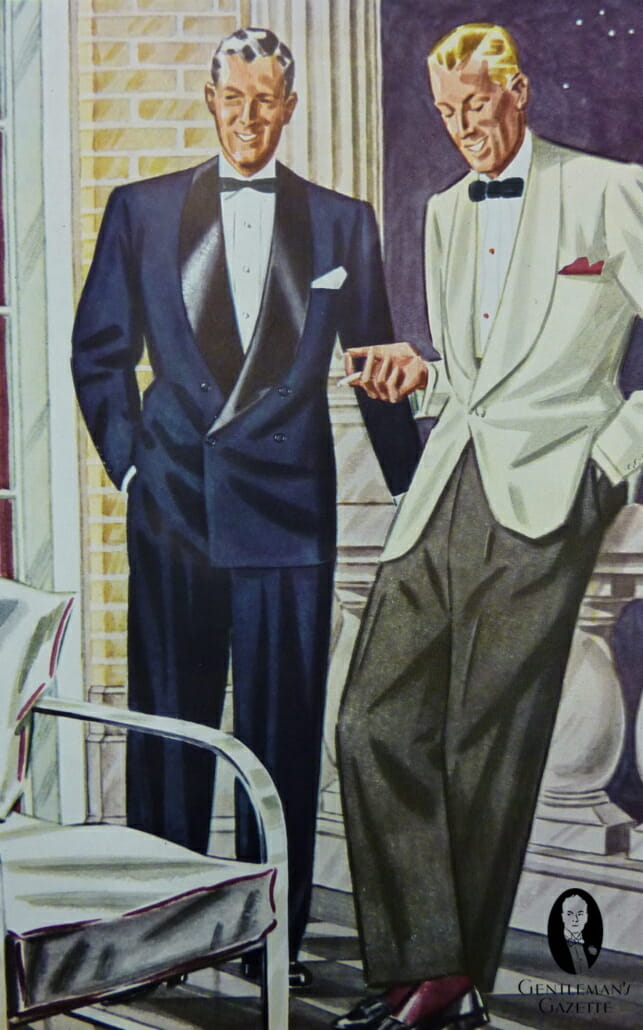
Who Should Wear Black Tie? Adults!
Evening wear is intended for adult occasions and so dinner jackets and tailcoats have traditionally been considered inappropriate for children. According to the Encyclopedia of Etiquette, “As a general rule, boys do not wear dinner jackets much before they are fifteen, or tailcoats before they are about eighteen.” Although published in 1967 this advice remains perfectly germane considering that these are the ages when young men trade in their youthful clothes for grown-up attire at popular coming-of-age ceremonies (see below).
In fact, the only time that children younger than these ages are likely to attend a formal affair is when they are invited to participate in a wedding. In these circumstances, only junior ushers should wear the same clothing as their adult counterparts.
In the end, it all boils down to a simple rule of thumb: if a boy is too young to tie a formal bow tie then he is too young to wear one.
Where Can You Wear Black Tie? By Custom!
Fading Traditions
Prior to World War II, there was an implicit understanding among polite society as to what type of occasion called for what type of attire. Throughout Victorian and Edwardian times the tailcoat was expected at every evening function where women were present – originally including dinner in one’s own home – while the newly invented dinner jacket was deemed appropriate only for informal stag affairs. Then during the interwar period, the tuxedo supplanted the tailcoat as standard evening wear and white tie became reserved only for very formal occasions such as balls, elaborate formal dinners or a box at the opera.
Following the Second World War, social standards became even more casual and formalwear rules more subjective. The tuxedo was increasingly associated only with special occasions such as formal parties, fine dining or an opening night at the theatre, traditions which dwindled during the counterculture movement of the sixties and seventies. Although yuppie consumerism brought about the return of the swanky soirée in the eighties, the universal customs of old had long been replaced with conventions determined by geographic region and socioeconomic status. Thus it is today that in the United States alone there can be significant differences in formalwear standards between the country’s east, west and Gulf coasts and even within these regions there will be different expectations at upscale galas and cosmopolitan debutante balls versus middle-class weddings and suburban proms.
Consequently, most formal affairs requiring black tie will now state this explicitly in the invitation or other forms of guest instructions. Yet there remain a few occasions where evening wear is expected, or at least welcomed, largely by implication. If you are looking for excuses to enjoy your black-tie finery or just want to ensure that you will not be noticeably underdressed, it would be wise to research local custom before attending the following formal functions.
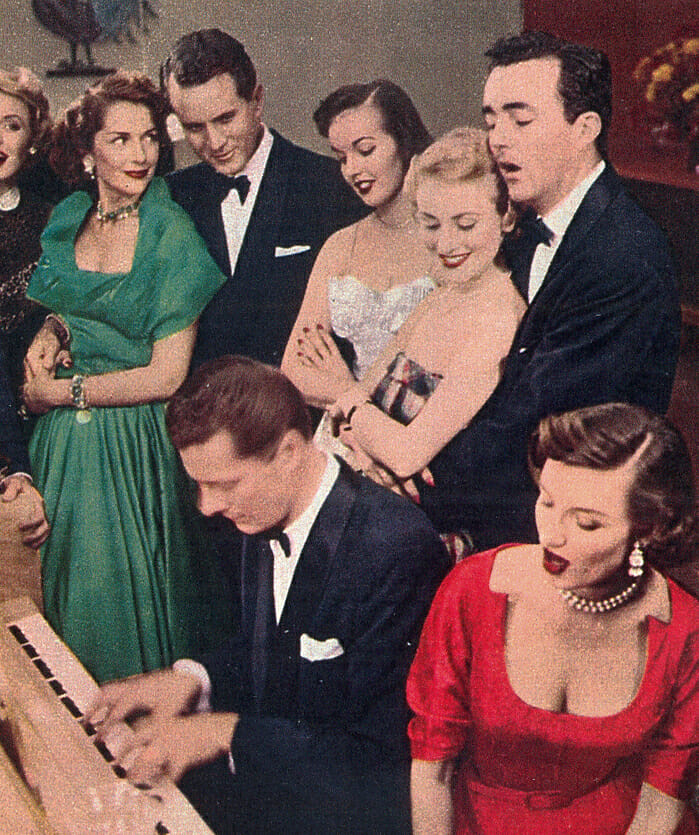
Black Tie at Prom Equivalents
The Canadian equivalent of the American prom is a Grad or Formal and is usually only held for the graduating classes of secondary school or junior high school (grades 7 & 8) as opposed to American proms which are often held for the junior and senior classes of these school levels. Australians also use the term “Formal” for their secondary school equivalent.
According to Wikipedia’s “Prom” article, the British equivalent is Valedictory Ball, Leavers’ Ball orLeavers’ Dinner. They have not traditionally been as formal as their North American counterparts but in 2004 The Independent reported that “the American-style prom has arrived”.
Where: Public Entertainments – Opera, Theater, Gala
Opera has traditionally been considered the most prestigious of all the arts and has consequently required patrons to dress in the most formal style of apparel. In fact, it was the great opera houses of Europe that originated the term “dress circle” for the section of seats limited exclusively to ladies and gentlemen who were properly attired. While the days of mandatory tailcoats – not to mention elaborate opera-box social protocols – are long gone, it is still common in many cities to see the best seats occupied by aficionados dressed in their finest evening wear for special performances such as first nights and season openings (see below). Premier performances at the ballet and symphony are also often implicitly Black Tie Optional affairs as are opening nights of major theatrical productions.
A word of caution though: the balcony is a “don’t dress” section unless you and your companion will later be attending a formal function. As etiquette maven Amy Vanderbilt once explained, “A couple in evening dress but sitting in the balcony might seem to be slumming, though it is true that those who know music and the dance prefer the vantage point of the first balcony to the more fashionable orchestra.”
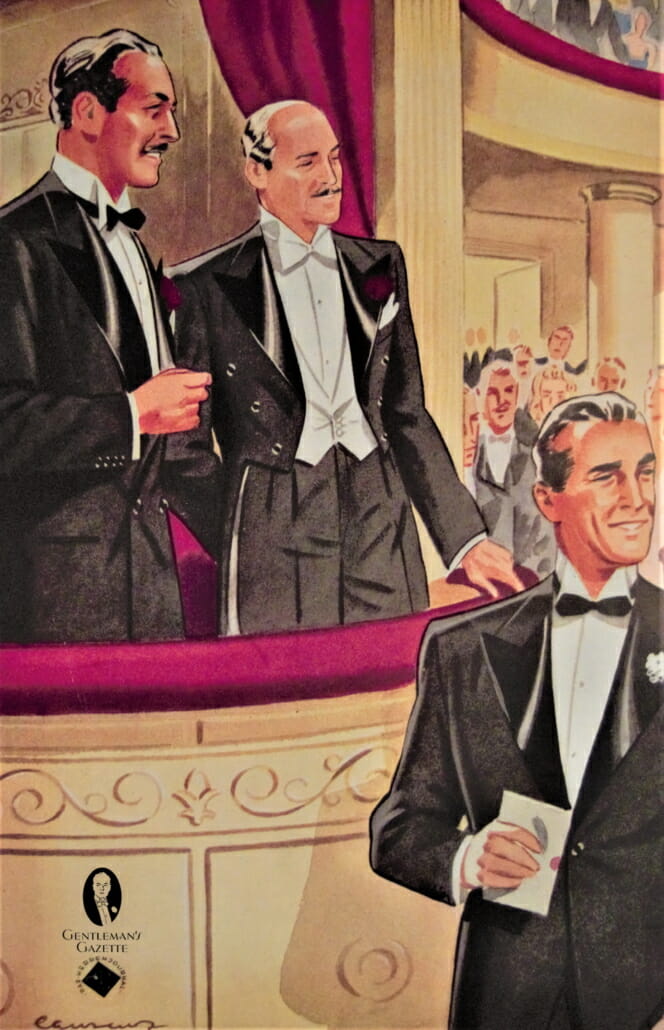
Black Tie for Private Entertainments
At the most formal end of the spectrum, black tie has taken over from white tie at many occasions where the latter would previously have been worn. According to Emily Post’s Etiquette, only if the invitation specifically states White Tie (or the equivalent) must a man wear a tailcoat. However, there are still a few balls which require full dress, more so in Europe. Wikipedia lists a number of British examples as well as the world-famous Viennese Opera Ball which is actually open to the public (or at least those who can afford the ticket price). In America, the white-tie opportunities are fewer and mostly limited to debutante balls as well as grand Carnival balls where the dress code is traditionally worded as Costume de Rigueur.
Private black-tie affairs, in contrast, remain relatively popular. They are most likely to be formal banquets or dinner-dances held by large corporations, professional associations and fraternal organizations.
Where: Coming-of-Age Ceremonies
One type of formal dance that the Emily Post book specifically highlights as an unwritten white-tie affair is the debutante ball: the formal introduction of young ladies – usually 17 or 18 years of age – to affluent society. Dating back centuries, this custom is rich in tradition including the practice of the debutante’s escort and father wearing full dress while the other male guests attire themselves in black tie.
As the middle-class version of debutante balls, proms and their international equivalents (see sidebar) usually have a much less sophisticated interpretation of “formal”. Even in the schools where tuxedos are preferred over regular jackets and ties, young men will often opt for outfits that bear little resemblance to proper black-tie attire.
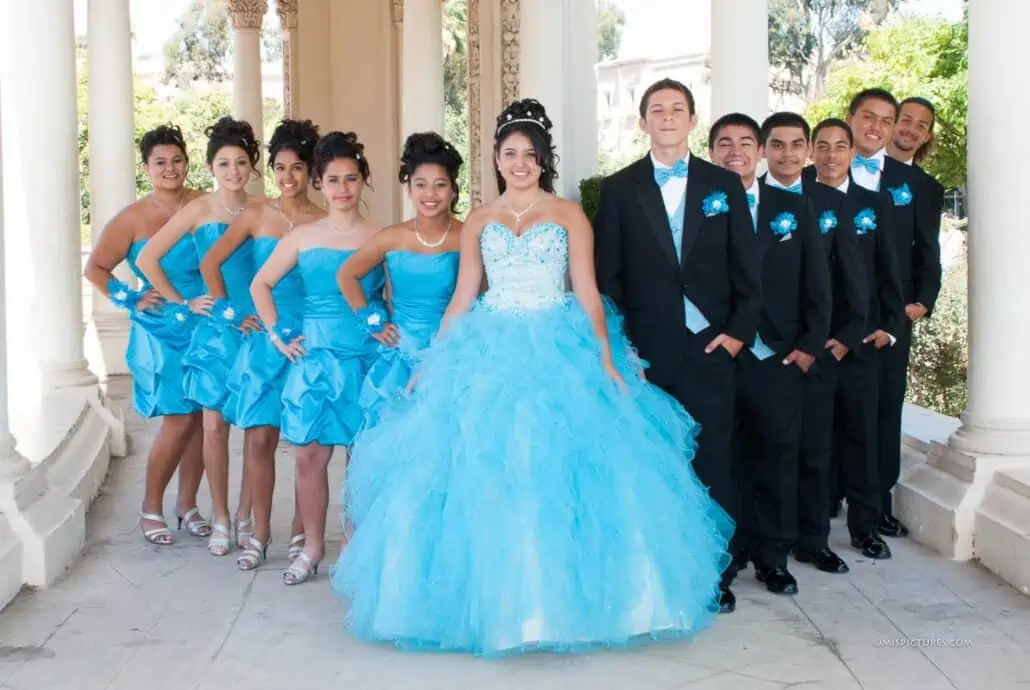
Quinceañera
The Quinceañera (pronounced keen-say-ah-NYE-ra) is a relatively new tuxedo tradition in America. It translates roughly as “fifteenth birthday girl” and refers to a Latin American celebration that is equivalent to an elaborate Sweet Sixteen or a debutante ball. The celebrant is customarily accompanied by her escort plus a “court” of fourteen other couples, usually dressed in formal attire.
Quinceañeras can sometime rival weddings in their scope and have been a boon for the formal wear industry that is suffering from the recession’s impact on elaborate proms.
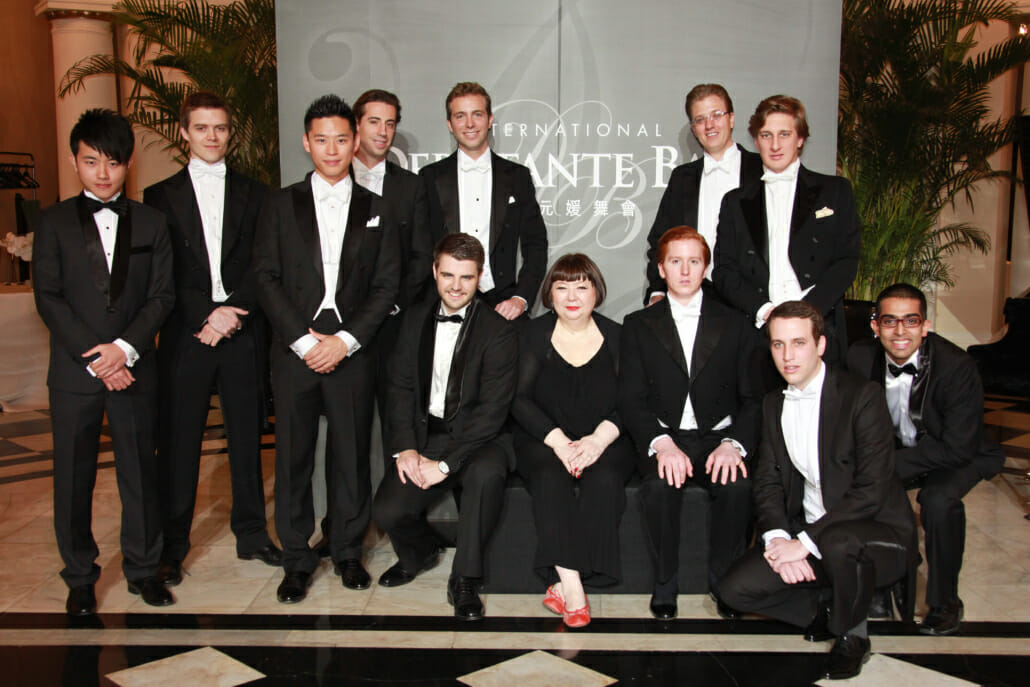
Where: Evening Wedding Ceremonies
Marriage ceremonies are commonly held to more traditional standards than are most other social occasions, and a formal evening wedding is the grandest of all. If you are invited to a ceremony that begins after 6 o’clock, takes place in a cathedral and is followed by an elaborate reception then chances are that the guests will be adorned in the traditional black tie. If you are asked to actually participate in such a ceremony then expect to be wearing white tie.
Such affairs are relatively rare though – particularly in Britain where weddings are not held in the evening – and the most formal type of ceremony the average man is likely to attend will only require tuxedos of the groomsmen. Complete details of proper wedding attire for guests and grooms can be found in Formal Evening Weddings.
Where: Evenings at Sea
Many traditionalists lament the loss of shipboard formal tradition but the present situation isn’t quite as bleak as some like Miss Manners make it out to be:
Dressing on cruise ships has become Standard Tourist . . . Miss Manners deeply regrets the general passing of wearing black tie to dinner, and applauds those few ships and passengers who steadfastly stick to the custom. Of course, one does not so dress the first night out, the last night out, the night before getting into port, nights when the ship is in port, or nights when the ship is leaving port. On most cruises, this accounts for every night there is, but Miss Manners would still like to see evidence of the intention, such as a steamer trunk full of evening clothes in case the ship is unexpectedly stranded at sea.
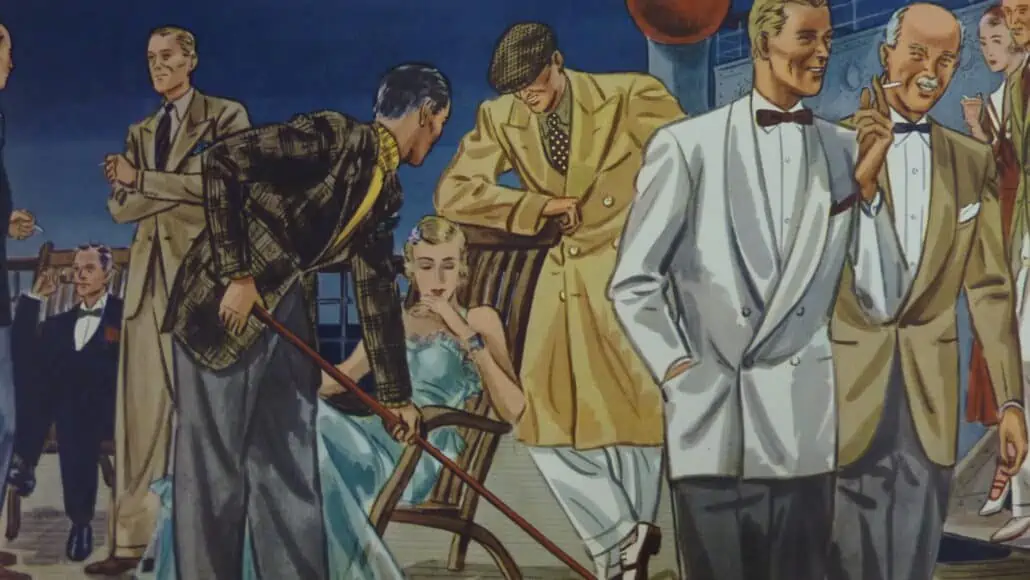
While it is true that black tie is no longer mandatory for evenings at sea, thanks to the advent of budget-priced mega-ships, the fact is that other than weddings and proms, cruises provide the most popular opportunities for most men to don a tuxedo. In fact, some cruise lines pride themselves on their formality after six, a few going so far as to remind passengers that they are expected to dress not just for dinner but for the duration of the evening. Even those lines that market frivolity over formality usually offer onboard formal wear rentals for the benefit of tradition-minded passengers.
The number of formal nights on a cruise can vary widely depending on the itinerary, the cruise line and sometimes even the ship itself. Generally speaking though, the first and last evenings are never formal since most of a passenger’s wardrobe is packed away on these nights. Days in port are also informal as they do not provide adequate time for passengers to change before dinner. To maximize your black-tie evenings, seek out itineraries with more sea days such as transatlantic crossings which are very formal, especially aboard Cunard ships.
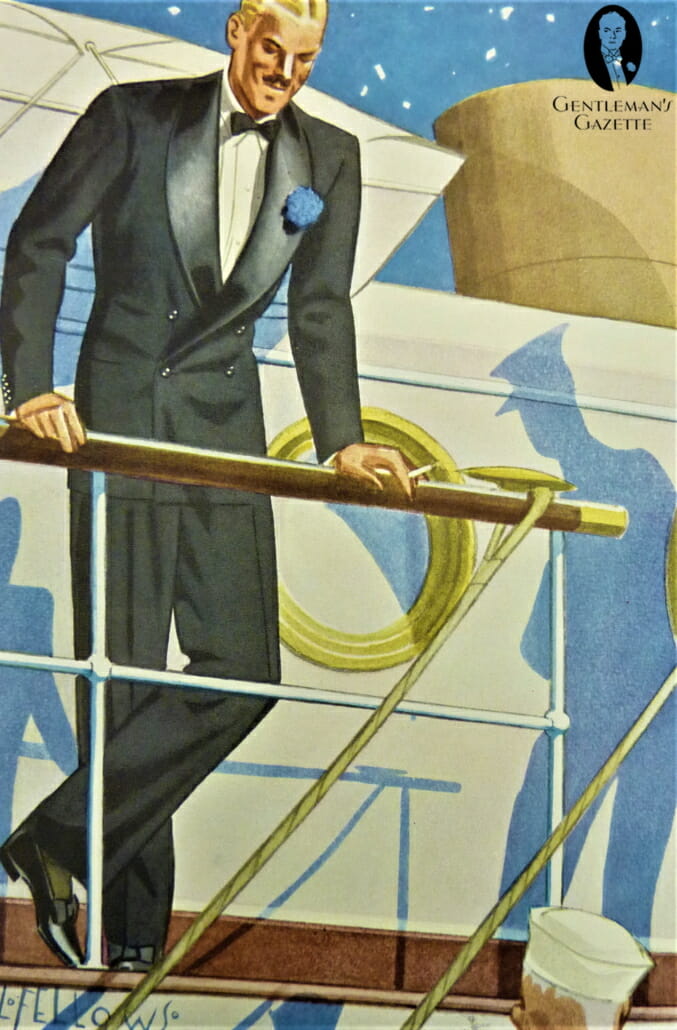
What is the most formal cruise line?
Black-tie fans should note that Seabourn used to be the most formal of the exclusive smaller cruise lines, while Cunard, Crystal and Celebrity are the most genteel of the larger lines.
The number of formal nights on a given cruise varies so it’s best to contact your travel agent or visit Cruise Critic to chat online with experienced passengers about exact details.
Where: Diplomatic Functions – Traditionally White Tie
White tie is eminently suited to ceremonial diplomatic functions such as state dinners. While these extremely formal evenings remain a tradition in the royal courts of Europe, American presidents have hosted only two such dinners since Ronald Reagan left office in 1989. President Bush the junior also put an end to wearing white tie for the traditional White House reception for the diplomatic corps after he took office in 2001. More often than not, White House functions are now typically black-tie affairs.
On a related note, U.S. presidents frequently speak at two of the last white-tie dinners still held in the country: the Gridiron Club dinner hosted by the oldest journalistic organization in Washington and the Alfred E. Smith Memorial Foundation Dinner which is a Catholic charities fundraiser held in New York each year.
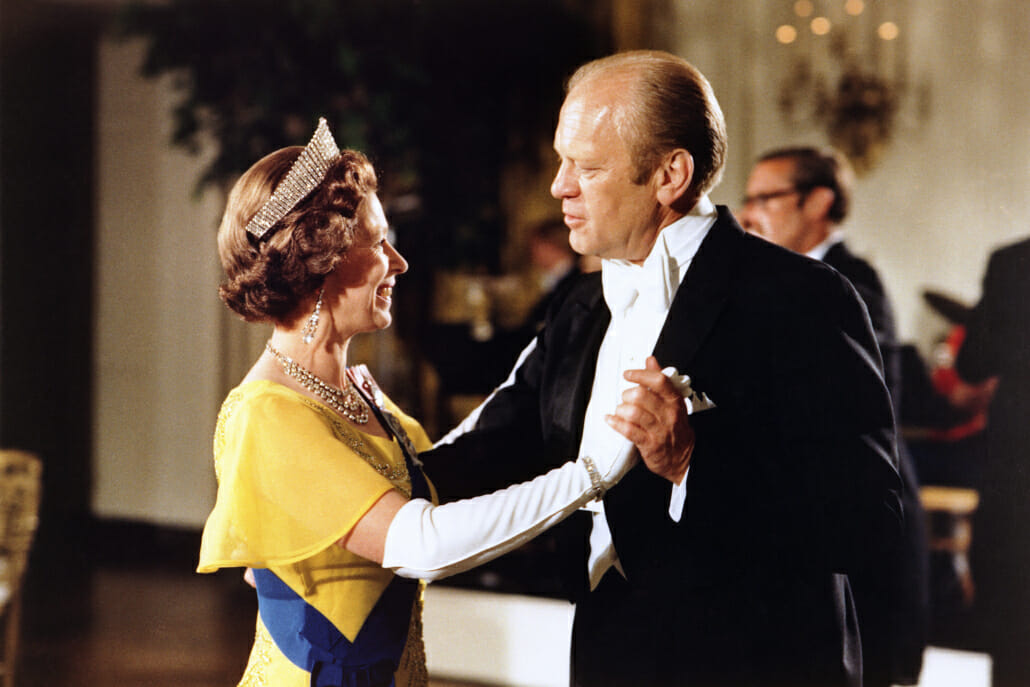
Institutional Dress Codes
Historic societies at prestigious universities such as Cambridge and Oxford and fraternal organizations such as Masonic Lodges will also have their members don full dress for special events. These groups may have their own versions of traditional formalwear codes which makes their attire more of a uniform than evening wear per se. This is not a breach of etiquette provided that these variations are limited to private functions.
Nordic White Tie At The Nobel Prize Ceremonies
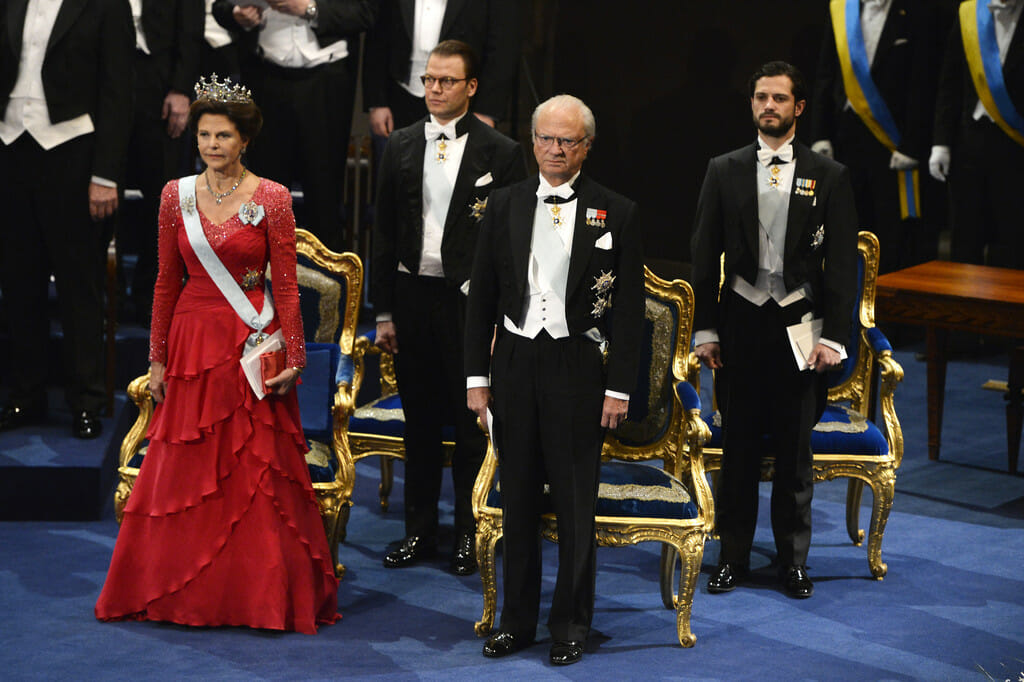
Men in Finland, Norway, and Sweden are particularly fond of White Tie and will often wear it at daytime weddings. Of course, the fact that the sun sets at 3:00 pm or earlier in the dead of winter gives them a perfect excuse to do so.
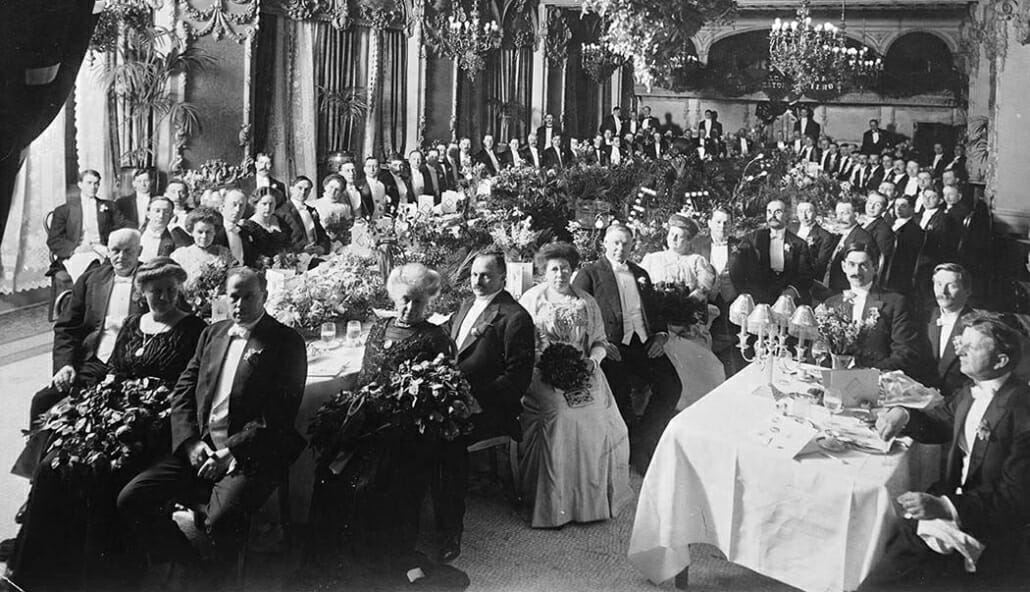
Where: Formal Dinners
A truly formal dinner follows traditional etiquette regarding the style of invitation, style of table setting, number of courses, type of service and, of course, appropriate dress. At the very minimum, a formal dinner is served by wait staff. At the highest level of formality such as at a state dinner, there are strict protocols that govern everything down to the details of the place cards.
Where: By Invitation
Black-tie and white-tie events are now almost exclusively indicated by invitation rather than tradition.
Originally it was considered gauche to state a dress code on an invitation because of the aforementioned universal understanding of what attire was appropriate for what type of event. This was especially true in the case of weddings and private parties where an invitation that was engraved and written in the third person was the unmistakable mark of a formal affair and guests knew implicitly that evening dress or morning dress was expected depending on the time of the event. (In fact, should you ever receive such an invitation, it would still be a wise idea to confirm that this is not the case.)
In North America however, so few parties today are truly formal that even the conservative Emily Post’s Etiquette allows hosts to include dress instructions on invitations in order to make it clear to guests that an event is formal. The author advises readers that “‘black tie’ or ‘white tie’ is conventionally printed in the lower right corner of invitations to proms, charity balls, formal dinners or dances, and any event for which clarification of dress standards may be necessary.”
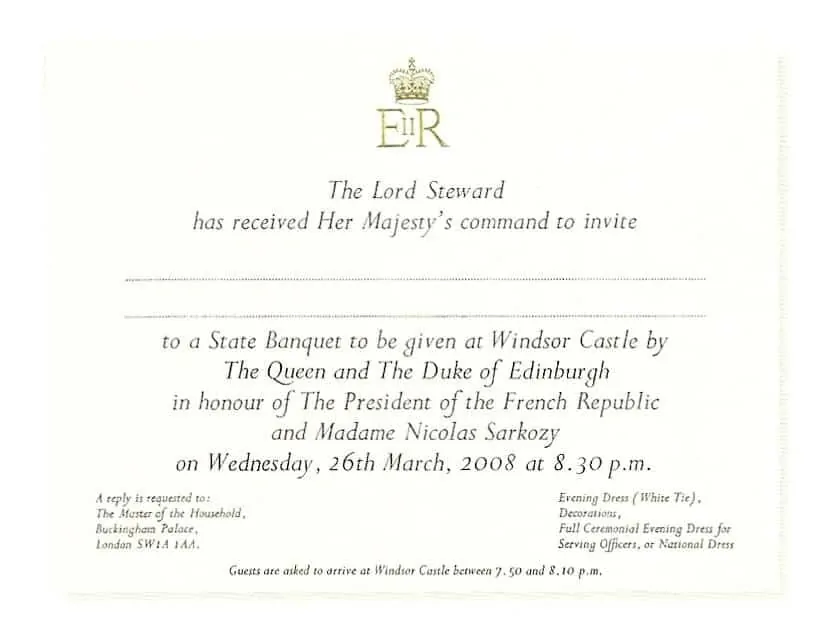
Yet despite the black-and-white simplicity of this system, hosts in recent decades have taken it upon themselves to needlessly complicate matters by devising ambiguous variations of the clear-cut Black Tie label. To understand where these deviations came from – and why they are to be shunned – we will begin with a look at the role of dress codes in general and answer the last of the five W’s, why.
What to Wear for First Night? Black Tie or White Tie!
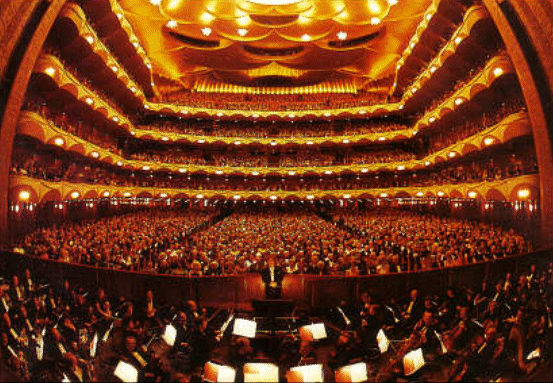
“First night” is the term for the opening night of a performance run, usually in opera or ballet (which do not have previews and an official opening night unlike theater). The first night of a performance season is the dressiest of the year so Black Tie or White Tie are the way to go.
Explore this chapter: 2 Black Tie & Tuxedo Etiquette
